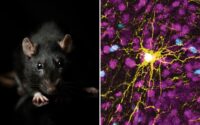Pets, people could spread drug-resistant ‘superbug’ to each other
Your pet might be bringing more germs into your house than you think.
People and their pets may be able to transmit drug-resistant “superbugs” to each other, new research suggests.
The research — which will be presented at this year’s European Congress of Clinical Microbiology & Infectious Diseases (ECCMID) in Copenhagen, Denmark on April 15 — noted that cross-transmission cases are rare and it’s still unclear if pets are giving germs to people or the other way around.
“Our findings verify that the sharing of multidrug-resistant organisms between companion animals and their owners is possible,” lead researcher Dr. Carolin Hackmann said in a release. “However, we identified only a handful cases suggesting that neither cat nor dog ownership is an important risk factor for multidrug-resistant organism colonization in hospital patients.”
Researchers looked at over 2,800 hospital patients and their furry friends to examine whether pets could be responsible for patients infected with multidrug-resistant organisms (MDROs).
Between June 2019 and September 2022, experts used nasal and rectal swabs from 2,891 patients hospitalized at the Charité University Hospital Berlin — 1,184 patients with previous colonization and 1,707 newly admitted patients as the control group — as well as swabs from dogs and cats that lived in patients’ homes.

They focused on looking for the most common superbugs that are resistant to multiple antibiotics, such as methicillin-resistant Staphylococcus aureus (MRSA), vancomycin-resistant enterococci (VRE), 3rd generation cephalosporin-resistant Enterobacterales (3GCRE) and carbapenem-resistant Enterobacterales (CRE).
Patients were asked about their well-known risk factors for MDROs, as well as information about the pets in their home, such as the number of pets, the closeness of contact and pets’ health.
Scientists used genetic sequencing to identify the species of bacteria in the swab samples and the presence of drug-resistance genes. They used whole genome sequencing to confirm the potential sharing of drug-resistant germs.

Of the participants, 30% tested positive for MDROs and 70% tested negative. Of those who tested positive, 11% were dog owners and 9% were cat owners. Thirteen percent of negative patients were cat or dog owners.
Over 600 pet owners were asked to send their pets’ throat and stool swab samples, and 300 pet owners sent back samples from 400 pets. The samples showed that 15% of dogs and 5% of cats tested positive for at least one MDRO. In four cases, the pet MDROs were the same species and showed the same resistance as their owners.
The study showed that only one of the matching MDRO pairs — 3GCR Escherichia coli, which is commonly found in the intestines of both healthy people and animals — was genetically identical between a dog and its owner.
Antimicrobial resistance occurs when microbes that cause infection become resistant to the drug that kills them off. Resistant infections were the cause behind almost 1.3 million deaths and nearly 5 million in 2019, according to research published in The Lancet.
“Although the level of sharing between hospital patients and their pets in our study is very low, carriers can shed bacteria into their environment for months, and they can be a source of infection for other more vulnerable people in hospital such as those with a weak immune system and the very young or old,” Hackmann said.


